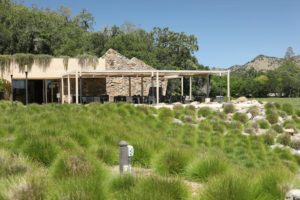
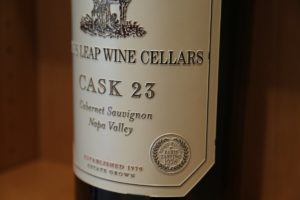
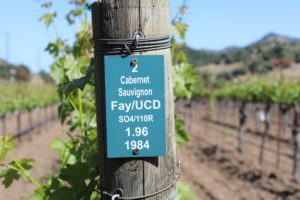 Stag’s Leap Wine Cellars (apostrophe before the S) was founded in 1970 by longtime Napa Valley resident Warren Winiarski (originally from Chicago, died in June 2024). In May 2023, the winery was acquired by Italy based Marchesi Antinori, also owners of Antinori Napa Valley. “Winiarski” in Polish according to Google Translate means wine, or other definitions show as being a producer or seller of wine. Warren’s father Stephen ran a livery business for weddings and funerals but also was a home wine maker (fruit wine, honey wine and dandelion wine) but only served alcohol during holidays.
Stag’s Leap Wine Cellars (apostrophe before the S) was founded in 1970 by longtime Napa Valley resident Warren Winiarski (originally from Chicago, died in June 2024). In May 2023, the winery was acquired by Italy based Marchesi Antinori, also owners of Antinori Napa Valley. “Winiarski” in Polish according to Google Translate means wine, or other definitions show as being a producer or seller of wine. Warren’s father Stephen ran a livery business for weddings and funerals but also was a home wine maker (fruit wine, honey wine and dandelion wine) but only served alcohol during holidays.
Warren became interested in wine during a year abroad in Italy; later he met Philip M. Wagner, an influential viticulturist and author from the east coast. Philip in turn introduced Warren to Maynard Amerine a pioneer in the California research of grape growing and wine making and the first research professor at UC Davis (professor of Viticulture and Enology). Maynard began his career at UC Davis in 1935; he died in 1998. Over his career he was a prolific writer, authoring 16 books among his 400 or so publications. And early in his career he helped develop the Winkler Index, categorizing wine growing regions by total heat hours in each region (with applications relating to varietals and wine styles). He also made valuable contributions with wine making techniques and wine judging. Several old timers we have met in the valley have spoken very highly of Maynard and several took his classes while they were at UC Davis.
Warren began to explore wine regions including in New Mexico and California. Eventually he wrote several small wineries in Napa Valley asking if they needed any help (with some names provided by Maynard). The proprietor of one winery, Lee Stewart of Souverain, (the site of what is now Burgess Cellars) wrote back and invited Warren to come by the winery. Warren ended up taking an assistant winemaker job there for several years (Mike Grgich had worked at this small winery for a harvest a few years prior). After working at Souverain for two harvests, Warren started working for Robert Mondavi in 1966 (before ground was even broken on the winery facility) and also the 1967 harvest; he was part of the original Robert Mondavi winemaking team.
In 1965 Warren purchased 30 acres on Howell Mountain (near what is now Randy Dunn’s winery), planted Cabernet Sauvignon but later sold the property to purchase his Stags Leap property. Warren and his wife Barbara (died in 2021) lived in the old house on what is now the Dunn Vineyards property which is today used for the Dunn offices. In 1970, moving off the mountain, for approximately $200,000 Warren purchased a 44-acre parcel of next to grower, Nathan Fay. Nathan was a former mining engineer and World War II veteran who moved to Napa Valley with his wife Nellie for a complete change of lifestyle in 1951. He planted Cabernet Sauvignon in 1961 and while never making commercial wine himself, sold his grapes to a number of wineries. Warren developed a long-lasting relationship with the Fay’s eventually purchasing most of Nathan’s vineyard in 1986.
However, Nathan did make home wine and Warren tried some and was impressed; he was inspired to move to this part of the valley (what is now known as the Stags Leap District), had the vision to build the winery, plant the land to Cabernet Sauvignon and Merlot (after removing prune trees and old grape varieties) and ultimately began producing world class wines. His winery at the time was called Stag’s Leap Wine Vineyard and Wine Cellars.
And Warren was the founding winemaker (rather than hiring a winemaker) with consulting advice in the early years from André Tchelistcheff. A number of notable winemakers have made wine here including John Williams (Frog’s Leap), John Kongsgaard, Richard Ward (Saintsbury), Lynn Penner-Ash, Rolando Herrera, Jac Cole, Francois Peschon, Andy Erickson and Michael Silacci to name but a few – most of who have their own wineries or brands.
The first vintage of Stag’s Leap Wine Cellars was the 1972 Cabernet Sauvignon from their S.L.V. Vineyard. While associated with red wines, Stag’s Leap Wine Cellars produced a Riesling from Wild Horse Valley in the early years.
Hospitality
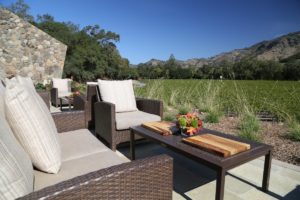
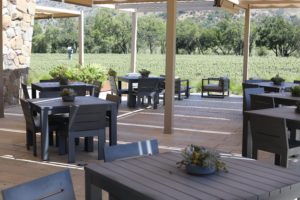
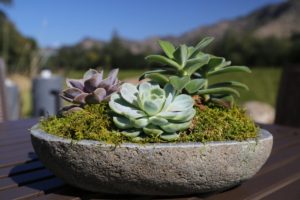 From the Silverado Trail continue straight on their short driveway until reaching a parking lot on the right hand side. A modern and welcoming hospitality center opened in early fall 2014, designed by Barcelona based architect, Javier Barba of the firm, BC Estudio Architects; this replaced their previous tasting room. This new hospitality center offers inspiring views in that its primary tasting room overlooks some of the finest scenery in the Stags Leap District.
From the Silverado Trail continue straight on their short driveway until reaching a parking lot on the right hand side. A modern and welcoming hospitality center opened in early fall 2014, designed by Barcelona based architect, Javier Barba of the firm, BC Estudio Architects; this replaced their previous tasting room. This new hospitality center offers inspiring views in that its primary tasting room overlooks some of the finest scenery in the Stags Leap District.
It feels like (and rightly so) that the Fay Vineyard is on stage and visitors are the captivated audience.
One block of the well-known Fay Vineyard is located directly below the tasting room. A contemporary setting with large windows allows one to enjoy excellent views of this premium vineyard as well as the rocky formations in the hills that form this part of the Vaca mountains. From the tasting room, views are looking down at Block 1a – the rest of the Fay vineyard lies behind the row of trees and is planted all the way to the base of the mountains.
Two tastings are offered, a portfolio and an estate tasting. Tours can also be arranged by prior appointment. Several private tasting rooms are on site and outdoor seating is also available. On a clear warm day this outdoor patio seating is an ideal place to sit back and enjoy fine wine and fine views. All tours are by appointment and do tend to fill up fast especially in the busier late spring and summer months.
The Estate Wine Tasting highlights wines made from grapes sourced from vineyards on site. Their oldest vineyard block on the property dates from 1972 and the fruit from this goes into a small production wine available only through their wine club.
A wine cave is also located on site (38,000 square feet); note the interesting “pendulum” hanging inside the cave which is supposed to symbolize the “aging of wine” (and is seen on tours). This cave is among the largest wine caves in Napa Valley which includes Palmaz (nearly 110,00 square feet), Jarvis (45,000 square feet) Rutherford Hill (41,000 square feet), Far Niente (40,000 square feet), Inglenook (38,000 square feet), Antinori (35,000 square feet), Schramsberg (34,000 square feet) and Pine Ridge (32,000 square feet).
Napa Valley wine cave pioneer Alf Burtelson, a general engineering contractor who founded his company in 1964 drilled the Stag’s Leap Wine Cellars Cave. He remembers the cave was drilled through granite, an extremely unusual pocket of this rock within Napa Valley. Alf is well into his 80s now and long since retired although is still living in the northern part of Napa Valley. Alf’s first job was working on building a several mile stretch in the late 1950s of what is now the 280 freeway south of San Francisco. He formed Alf Burtleson Construction company in 1964; his first client was the San Francisco Water Department with work conducted on Twin Peaks. Alf’s first cave job in Napa Valley was in 1972, to repair the original Beringer caves which his company did successfully; this eventually led to more work for Beringer, including drilling new caves.
For a period of time in the 1980s Alf’s company was the only company drilling winery caves within Napa Valley. During his time in business, caves evolved from only being used for wine production to being used for event spaces and needing commercial kitchens and bathrooms. His drilling rig was a Dosco MK2a Roadheader which was originally used in the UK for drilling coal mines. Alf told us he chose this equipment because it was able to drill curved ceilings rather than some of the American equipment at the time which could only drill flat ceilings. He sold his company in 2002; the last winery cave he drilled in Napa Valley was for Bryant Family Winery. A look at Napa Valley’s wine caves including the significant contributions that Alf made to the valley is highlighted in the book, Into the Earth: A Wine Cave Renaissance by Daniel D’Agostin and Molly Chappellet.
Several wine club options are available giving members access to limited production wines, and preferred seating on site. Several tours are also offered including the premium Fire & Water experience focusing on learning about the estate on a guided tour and finishing with a tasting of their estate wines paired with fresh appetizers.
When the level of excellence has been set so high from the beginning, one has a continued weight of responsibility to strive for perfection; despite the ownership changes since Warren Winiarski sold his iconic winery, Stag’s Leap Wine Cellars continues to produce world-class wines and set the bar extremely high on quality.
Select Wines
While this is a “cab house”, Stag’s Leap Wine Cellars produces white wines each year including several Sauvignon Blanc and Chardonnays. And while sharing a similar name as Stags’ Leap Winery, they also share something similar in that both are producing exceptional white wines; their whites should never be overlooked exclusively in favor of their red wines.
Whites
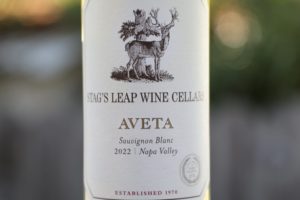
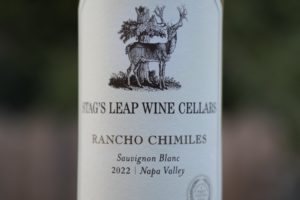 The 2022 Stag’s Leap Wine Cellars AVETA, Sauvignon Blanc Napa Valley is sourced from a variety of vineyards, all located in Napa Valley’s cooler and southern located Oak Knoll District. These vinyards include: 48% Danika Ranch, 15% Bravo Zulu 18% Trubody Ranch and 11% Ryan’s Vineyard. It is a blend of 74% Sauvignon Blanc, 21% Sauvignon Musqué, 4% Muscat Canelli and 1% Sémillon. The wine was fermented cold in 33% stainless steel and 67% French oak barrels and then aged on lees after its gross lees were racked off for 6.5 months with battonage occurring every two weeks. Pale gold in color; the aromatics are not shy and immediatley make their presence known as soon as this bottle is opened. They offer scents of pineapple, apricot, orange blossom, papaya, ripe starfruit, vanilla and a honeyed component including of honeycomb. Their are no herbal characters on the bouquet that this variety often expresses from cooler and early harvested sites; it is clearly on the riper side of the aromatic spectrum. On the palate, there are flavors of pineapple, freshly cored Golden delicious apples, mandarin orange, pear, pineapple guava, apricot and yellow nectarines. Lingers with a subtle fruit driven sweetness. The mouth feel is lightly rounded. 13.5% alcohol. Balanced, flavorful and bright, this wine would be an ideal accompaniment with fresh ceviche, a gorgeous Latin girl and a rooftop bar in Lima, Peru. This wine was first produced in 2013 and is named after a water goddess associated with a spring in Trier, Germany. In various clay figurines, Aveta is often depicted as carrying bowls of fruit.
The 2022 Stag’s Leap Wine Cellars AVETA, Sauvignon Blanc Napa Valley is sourced from a variety of vineyards, all located in Napa Valley’s cooler and southern located Oak Knoll District. These vinyards include: 48% Danika Ranch, 15% Bravo Zulu 18% Trubody Ranch and 11% Ryan’s Vineyard. It is a blend of 74% Sauvignon Blanc, 21% Sauvignon Musqué, 4% Muscat Canelli and 1% Sémillon. The wine was fermented cold in 33% stainless steel and 67% French oak barrels and then aged on lees after its gross lees were racked off for 6.5 months with battonage occurring every two weeks. Pale gold in color; the aromatics are not shy and immediatley make their presence known as soon as this bottle is opened. They offer scents of pineapple, apricot, orange blossom, papaya, ripe starfruit, vanilla and a honeyed component including of honeycomb. Their are no herbal characters on the bouquet that this variety often expresses from cooler and early harvested sites; it is clearly on the riper side of the aromatic spectrum. On the palate, there are flavors of pineapple, freshly cored Golden delicious apples, mandarin orange, pear, pineapple guava, apricot and yellow nectarines. Lingers with a subtle fruit driven sweetness. The mouth feel is lightly rounded. 13.5% alcohol. Balanced, flavorful and bright, this wine would be an ideal accompaniment with fresh ceviche, a gorgeous Latin girl and a rooftop bar in Lima, Peru. This wine was first produced in 2013 and is named after a water goddess associated with a spring in Trier, Germany. In various clay figurines, Aveta is often depicted as carrying bowls of fruit.
And in a partnership that dates back more than 50 years, Stag’s Leap Wine Cellars produces a Rancho Chimiles Sauvignon Blanc from the historic Rancho Chimiles Vineyard located in both Gordon and Wooden Valleys.
The 2022 Stag’s Leap Wine Cellars Rancho Chimiles Sauvignon Blanc, Napa Valley is a blend of 71% Sauvignon Blanc, 15% Sauvignon Musqué and 14% Sémillon. This wine was fermented and then aged for 8 months in 100% older Acacia barrels. It is medium gold in color; while distinctive, the bouquet is initially a bit shy in the glass and needs some time to fully evolve. We respected its aromatic wishes and let it sit for about 20 minutes before we started to examine it further. As it evolves, it offers scents of pineapple, wild honey, carambola (starfruit), chamomile, orange peel and honeydew melon. And there is an herbal but not a green note, most similar to lemon zest. In a blind tasting of this vintage against other Napa Valley Sauvignon Blanc bottlings, we hope we could pick this wine out on aromatics alone. On the palate there are flavors of lemon/lime, not fully ripe pineapple, passion fruit and lemongrass. Its texture is rounded with a lightly fleshy character; balanced and bright, this wine features a lively and mouth watering acidity. It drinks well by itself, but we really want to drink this with any sort of shellfish – take your pick.
The 2019 Stag’s Leap Wine Cellars Arcadia Vineyard Chardonnay (blended with 1% Muscat Canelli which probably helps heightens the floral tones on the bouquet) is medium gold in color; the bouquet offers aromas of citrus blossom, honeysuckle, lemon, melon, nectarine, apple and pear. Creamy, rounded and supple across the palate this is an intensely flavored but very well-balanced Chardonnay showing mandarin, pineapple, golden kiwi and pear. It lingers with some notes of baking spices, very lightly toasted oak and a citrus like/lemon flavor along with brightness from the acidity. This is no California styled oak-driven and buttery bottling. Pairs great with Tom Yum Goong (Thai spicy shrimp soup). This 128-acre vineyard was purchased by Stag’s Leap Wine Cellars in 1996 and is located in Napa’s cooler Coombsville climes near Mt. George; the vineyard namesake is a region in Greece. This thoughtfully crafted wine was fermented in 49% new French oak, 35% stainless steel and 16% in concrete egg. And it was aged sur lies for 10 months and only 50% was allowed to go through malolactic fermentation.
Reds
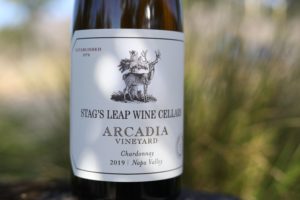
 The 2020 Stag’s Leap Wine Cellars Artemis Cabernet Sauvignon is a blend of 99% Cabernet Sauvignon and 1% Merlot with grapes coming from both purchased and estate fruit. It was aged in 50% new French oak and 4% new American oak with the remainder in used French oak barrels. This wine is deep ruby and nearly opaque in the glass; the bouquet offers distinctive aromas of both ripe fruit and baking spices. These include blackberry jam, boysenberry, mulberry, prune with notes of Graham cracker, Biscoff cookies, brown sugar, espresso, chocolate and somewhat unusual for a Napa Valley red wine, a note of honeycomb. The palate features primarily darker fruits including blackberry, Santa Rosa plum and Pakistani mulberry. The finish is juicy, filled with flavor and supported by grainy tannins with an accompanying and persistent darker spice. There are loads of layers in this wine, both on the bouquet and the palate. The word Artemis is named after the Greek goddess of hunting.
The 2020 Stag’s Leap Wine Cellars Artemis Cabernet Sauvignon is a blend of 99% Cabernet Sauvignon and 1% Merlot with grapes coming from both purchased and estate fruit. It was aged in 50% new French oak and 4% new American oak with the remainder in used French oak barrels. This wine is deep ruby and nearly opaque in the glass; the bouquet offers distinctive aromas of both ripe fruit and baking spices. These include blackberry jam, boysenberry, mulberry, prune with notes of Graham cracker, Biscoff cookies, brown sugar, espresso, chocolate and somewhat unusual for a Napa Valley red wine, a note of honeycomb. The palate features primarily darker fruits including blackberry, Santa Rosa plum and Pakistani mulberry. The finish is juicy, filled with flavor and supported by grainy tannins with an accompanying and persistent darker spice. There are loads of layers in this wine, both on the bouquet and the palate. The word Artemis is named after the Greek goddess of hunting.
Despite their two primary Stags Leap District estate vineyards located so close to each other, there are remarkable differences in soils between the two. The Fay Vineyard Cabernet Sauvignon is grown on very alluvial soils contrasted with the S.L.V Cabernet Sauvignon (stands for Stag’s Leap Vineyard) which is predominantly from volcanic soils. Terroir makes a huge difference, and it is interesting to compare these two wines side by side for that very reason.
Their S.L.V Cabernet Sauvignon was chosen in a blind tasting by French judges as the overall best Cabernet Sauvignon at the now iconic Paris Wine Tasting of 1976 catapulting this winery along with Chateau Montelena & the Napa Valley wine growing region in general, to international fame. Bottles of those original winners are now housed in the Smithsonian Museum. They will never be consumed. A bottle of this 1973 vintage (made from grapes that were only three years old at the time) is also displayed in their hospitality center. And the 1973 vintage of this wine was chosen by the Smithsonian as one of the 101 Objects that Made America: America in the World.
The 2011 vintage was a fairly challenging year in Napa Valley due to late rains into June, a fairly cool summer and early rains during harvest. The 2011 Stag’s Leap Cellars S.L.V shows savory aromas, a dry gravelly nuance along with secondary notes of cocoa powder. The tannins are fairly well integrated with a lingering finish of high toned (red) fruit for some time. This is a vintage grown in certain parts of the valley (namely eastern hillsides) that is showing very nicely 6 to 7 years after its vintage date (at the time of our tasting).
In the mid 1970s they made a wine from a special vineyard block; this wine had very unique flavors and was aging in a Cask titled #23; this is how this wine got its name. The Estate Tasting includes a pour of the latest vintage of the Cask 23. This is their premium Cabernet Sauvignon bottling and is only made during select years in which the fruit is of the highest quality. It is their most age worthy wine and if cellared properly will still be drinking great in 10 to 20 years.
The 2010 Stag’s Leap Wine Cellars Cask 23 is dark ruby in color; the nose is elegant and somewhat floral including of violets with both red and black fruit aromas. The palate offers flavors of red currant and black cherry. The tannins are broadly distributed, contributing to a chewy finish. This is their most robust bottling; this wine has bright acidity, structure and fruit to ensure it should age quite well.
As an interesting side note; Stag’s Leap Wine Cellars was founded in the same year as the reincarnation of their nearby neighbor, Stags’ Leap Winery. Both wineries are often confused for each other, and it drives the hospitality folks at each winery crazy at times! In fact, both wineries went to court in 1986 over the name “Stag’s Leap” and the California Supreme Court ultimately decided to award Stag’s Leap Wine Cellars the apostrophe *before* the S and Stags’ Leap Winery the apostrophe *after* the s.
And to further complicate things, note that Stags Leap District has no apostrophe. And to make it even more confusing for consumers, sometimes in large wine retail outlets we see bottles from both wines displayed right next to each other, in some cases with bottles from both wineries literally touching.
Legacy
While no longer involved in the ownership of the winery, in 2018 the Winiarski Family Foundation donated 3.3 million dollars to the University of California at Davis’s library to support their continuing efforts to build a premiere collection of books from wine writers. This library already contains some 30,000 wine related books (including some rare volumes) and ancient maps dating back to 1287.
And he and Barbara, both graduates of St. John’s College in Annapolis, Maryland (he class of 1955 and she class of 1952) provided the initial financial support (5 million) for The Winiarski Student Center at the second campus location, St. John’s College near Santa Fe, New Mexico. This center features five buildings (opened in 2012) containing classrooms, dormitories and residence hall space. In 2018 the Winiarski Family Foundation donated 50 million to St. John’s College (the largest ever financial contribution in the college’s history) to lower overall tuitions for students at each university. St. John’s College in Maryland was founded in 1784 and in Santa Fe in 1963. Incidentally, Francis Scott is a graduate of St. John’s College in Annapolis, the author of the poem which became the U.S. National Anthem.
In 2021, through the Winarski Family Foundation, Barbara and Warren donated 5.1 million and in early 2024 another 6.1 million to fund the Warren and Barbara Winiarski Stroke and Diagnostics Center at the Queen of the Valley Medical Center in the city of Napa.
Warren became involved early on with supporting what became a watershed moment for Napa Valley: the implementation of the Napa Ag Preserve in 1968 creating regulation to ensure land remained zoned for agricultural uses.
Later in his life, he became one of the elder statesmen of Napa Valley, Warren’s long career was highly recognized and awarded. In 2017 he was inducted into the California Hall of Fame, with related exhibits housed in the California Museum in Sacramento. And in 2017 he was awarded the James Smithson Bicentennial Medal by the Smithsonian Museum.
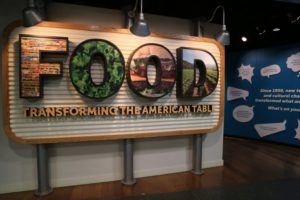
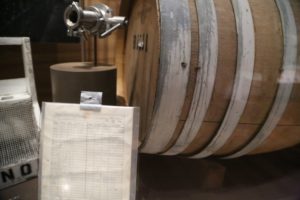 FOOD: Transforming the American Table 1950–2000 – Smithsonian, National Museum of American History
FOOD: Transforming the American Table 1950–2000 – Smithsonian, National Museum of American History
FOOD: Transforming the American Table 1950–2000 is an ongoing exhibit at the Smithsonian Museum, housed on the lower floor of the Behring Center, the National Museum of American History. Visitors to the Smithsonian National Museum of History can park on nearby streets (very limited parking) or at the parking lot next to the Ronald Reagan Building (only about a 10–12-minute walk away). Alternatively, the Federal Triangle Metro stop is only about a 1–2-minute walk away.
Warren and Barbara were instrumental in helping develop this exhibit which has been on display since late 2012. Several historical mementos, tools and other artifacts from the early days of Stag’s Leap Wine Cellars are displayed in a sub exhibit titled: Wine for the Table. These items include a Stag’s Leap Winery notebook from 1974 containing pages and pages of handwritten notes including winemaking details and names of vineyards worked with at that time (some of these notes were written by his only employee at the time, John Williams – later co-founder of Frog’s Leap Winery), a wine barrel and related equipment and a number of historical photographs from Warren and Barbara’s personal collection.
In addition to the physical items, a monitor plays 15 short interviews with Warren and some of his employees – made in 1997 when a team from the Smithsonian visited Stag’s Leap Wine Cellars and recorded an oral history project.
The exhibit is categorized into nearly 30 smaller sections – focusing from the recovery of Prohibition to more modern-day winemaking – along this historical timeline, highlighting individual personalities and wineries, tools, vineyard practices and other related information. The Stag’s Leap Winery items are only some of a number of mostly Napa Valley producers represented – other Napa Valley mementos are on display from vintners Mike Grgich and Gustavo Brambilia and from wineries including Biale Vineyard and Ceja Family Vineyard.
—
California Hall of Fame, California Museum Sacramento
The California Museum is located within a short walk of the state capitol building in downtown Sacramento (about an hour and 15-minute drive with no traffic from Stag’s Leap Wine Cellars). We tried to visit during some sort of lockdown and the museum was closed. We visited again at a later date and discovered that while Winiarski is in the California Hall of Fame, there is no specific permanent exhibit highlighting his particular contributions. However, rotating exhibits are displayed of California Hall of Fame members.
As of our latest update, total production is around 130,000 cases a year. For more information, to schedule a tour + tasting or to join one of their wine clubs, visit: www.stagsleapwinecellars.com for more information and to check out their wine club benefits, which is appropriately titled, “Club 23”.
Grounds/Hospitality
Cave
Winemaking
Paris Tasting of 1976
ARCHIVED NOTES
Chateau Ste. Michelle
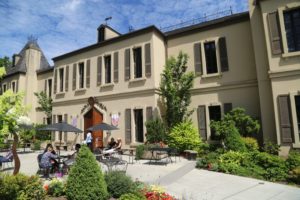
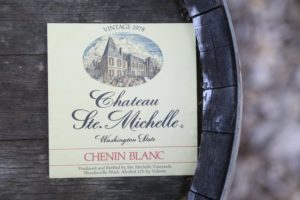 We keep our notes here for historical reference, since Chateau Ste. Michelle is no longer involved in the ownership of Stag’s Leap Wine Cellars.
We keep our notes here for historical reference, since Chateau Ste. Michelle is no longer involved in the ownership of Stag’s Leap Wine Cellars.
From 2007 through 2021, Chateau Ste. Michelle was Stag’s Leap Wine Cellars operating company; Stag’s Leap Wine Cellars sold in 2007 to a partnership between Chateau Ste. Michelle and Piero Antinori (prominent Italian vintner who also owns Antinori Winery in Napa Valley). In the original partnership, Chateau Ste. Michelle owned 85% of Stag’s Leap Wine Cellars and Antinori the other 15%. All of Warren’s vineyards were included in the sale except for one which he kept – Arcadia in Coombsville. Prior to Warren’s ownership, this vineyard was owned by Austin Hills, the co-founder of Grgich Hills with Mike Grgich. And until Warren died, he sold some of the grapes back to Stag’s Leap Wine Cellars and also sold grapes to Kongsgaard Winery. In 2025, the Antinori family purchased Arcadia Vineyard for Stag’s Leap Wine Cellars.
Chateau Ste. Michelle also previously owned Napa Valley based Conn Creek Winery and the 56-acre Greenwood Vineyards just north of Calistoga with fruit from this vineyard going into their Artemis Cabernet Sauvignon. And Chateau St. Michelle’s parent company was Altria – a public company that oversees several other operating companies including Philip Morris USA and other tobacco related businesses.
NOTE: in 2021 New York City based private equity firm, Sycamore Partners (with its headquarters located two blocks in from Central Park) purchased a controlling interest in Stag’s Leap Wine Cellars as part of a 1.2-billion-dollar transaction which also included the sale of Ste. Michelle Wine Estates from Altria. Among its wine holdings, Sycamore Partners owns numerous other non-wine brands including Ann Taylor and Staples.
NOTE 2: In mid 2023, Marchesi Antinori took over full ownership of Stag’s Leap Wine Cellars.
Chateau Ste. Michelle is a gorgeous 188-acre estate located in Woodinville Washington (about a 30-minute drive north of Seattle), open for tastings and tours throughout the year. The property is 105 mostly wooded acres and used to be called the Hollywood Farm. This is the oldest winery in the state of Washington having been founded in 1954 with roots dating back to 1934 – however the first vintage of Chateau Ste. Michelle was not produced until 1967 overseen in a consulting role by legendary Napa Valley winemaker André Tchelistcheff. The French-styled chateau was built in 1976.
Today the winery operates two separate state of the art production facilities; one for whites in Woodinville and one for reds at their Canoe Ridge Estate property (559 acres) located outside of the tiny community of Paterson along the banks of the Columbia River (an extremely confusing name since there is also a non-related Canoe Ridge Vineyard – a winery + separate tasting room in the town of Walla Walla). The first vineyard planted for Chateau Ste. Michelle was in 1973, the Cold Creek Vineyard which is now 753 acres and dedicated to André Tchelistcheff. Andre’s influence in Napa Valley has certainly been well chronicled, however he also left his mark on the Washington wine industry. And his nephew Alex Golitzin co-founded one of Washington’s top wineries Quilceda Creek along with his wife Jeannette.
Today Chateau Ste. Michelle contracts the majority of their grapes (rather than owning vineyards) and they are the largest producer of Riesling wines in the country.
Chateau Ste. Michelle, similar to Robert Mondavi Winery helped spawn the careers of numerous winemakers. Noted Washington vintner and founder of Long Shadows Winery, Allen Shoup worked at Chateau Ste. Michelle from 1980 until 2000, serving 17 years as the company’s CEO.
Visitors to the winery are free to explore the gorgeous grounds and picnic. Several tasting or tour options are available on site including an estate tasting (no appointment required) a tour of the winery + tasting, a guided tour of the property including a tasting, a blending session where guests learn the art of ‘building’ wines through blending and a separate sensory educational experience focusing on identifying characteristics of wine including both through smell and taste.
Also popular at the winery is their Summer Concert Series (similar to the ones held at Robert Mondavi Winery – but with a bit more space). Popular acts perform on select dates throughout the summer and big name acts have performed here in the past including Bob Dylan, Paul Simon and John Legend.
Chateau Ste Michelle, Woodinville, WA EXTERIOR
Chateau Ste Michelle, Woodinville, WA INTERIOR







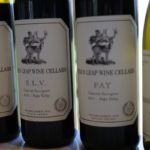
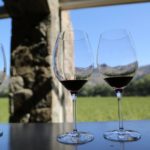
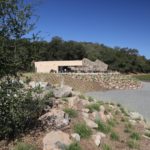
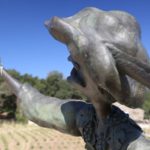
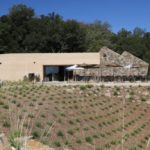
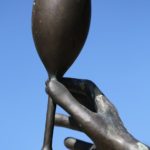
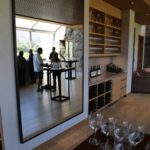
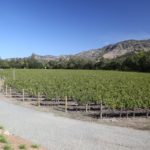
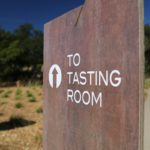
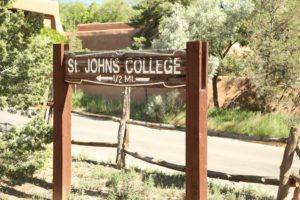

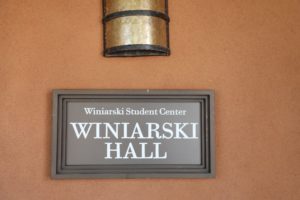
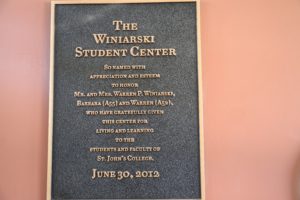

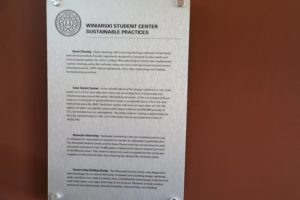
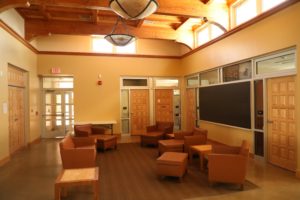
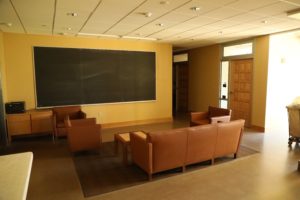
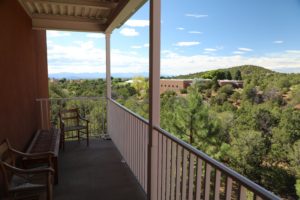
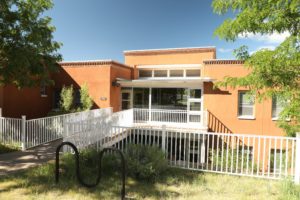
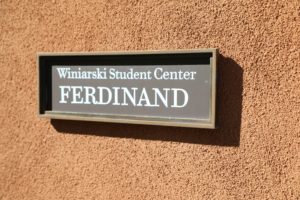
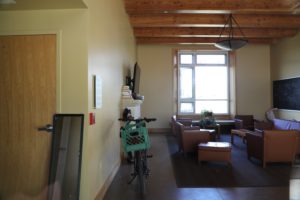
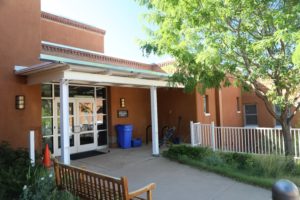
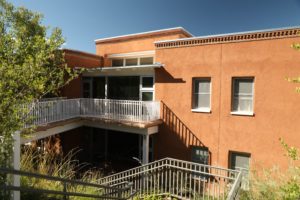
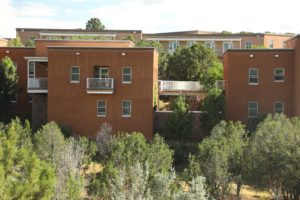
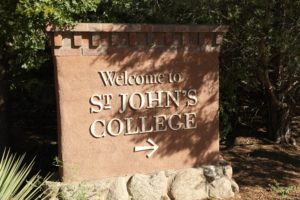

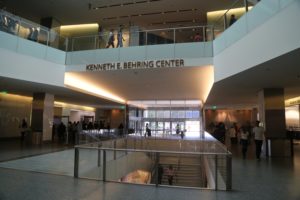
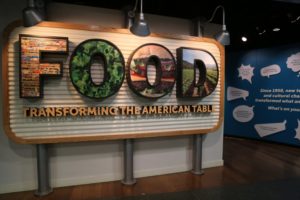
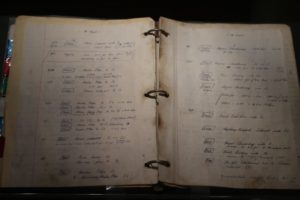
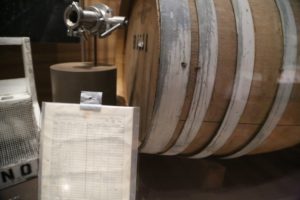
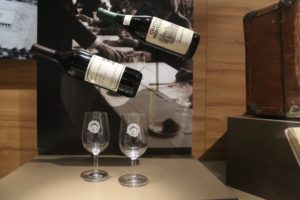
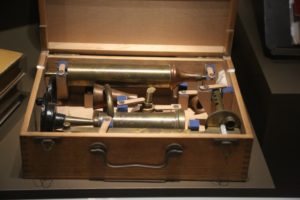
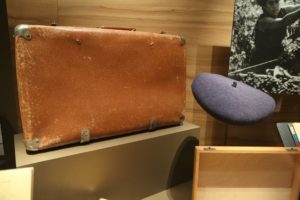
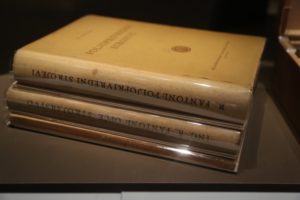
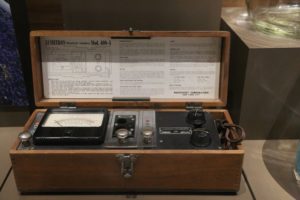
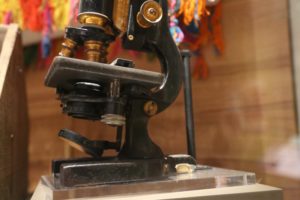
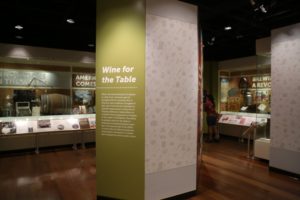
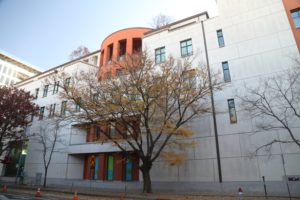
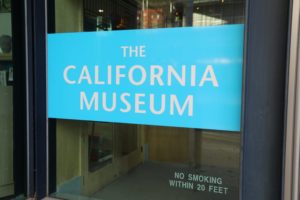

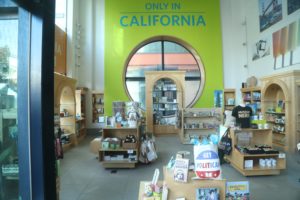
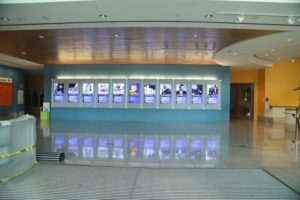
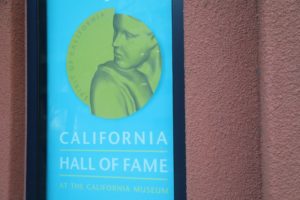
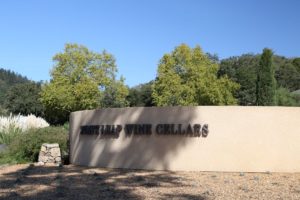
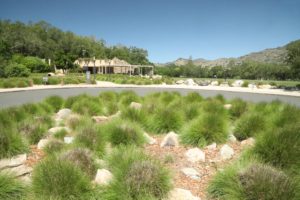
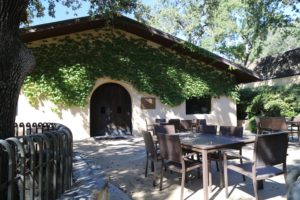
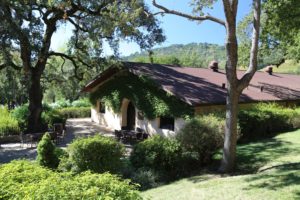
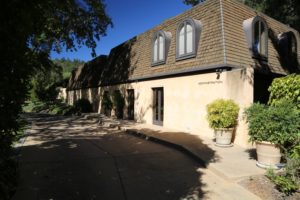
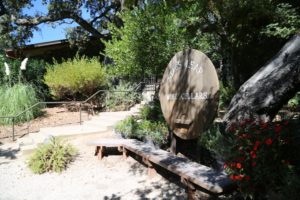
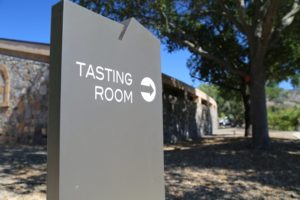
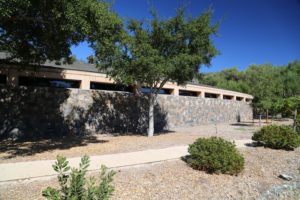
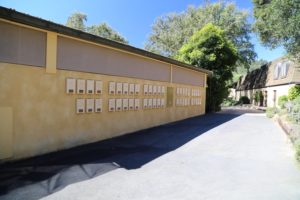
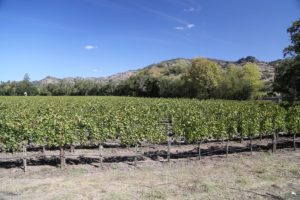
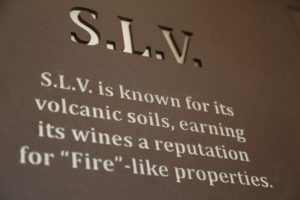
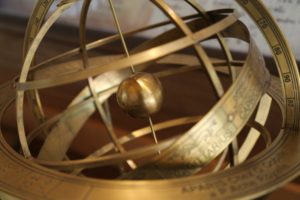

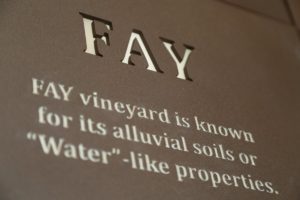
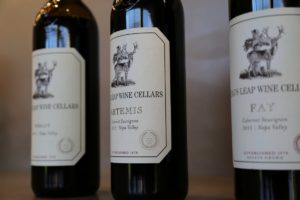
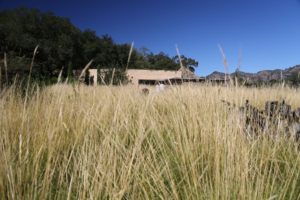
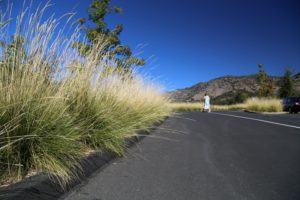
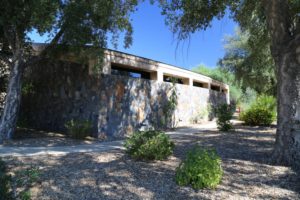
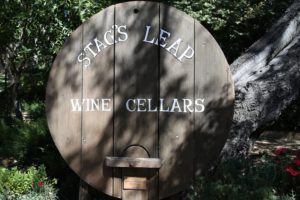
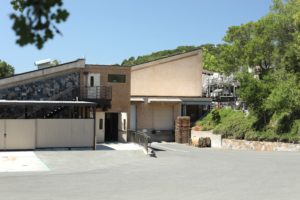
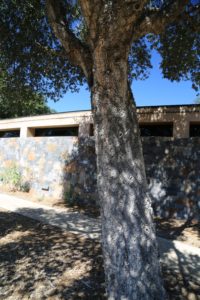
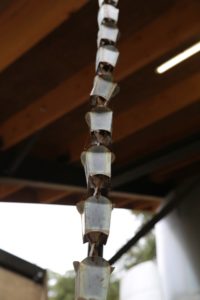
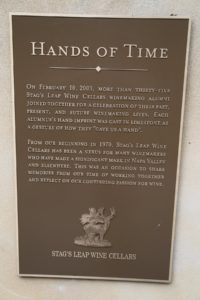
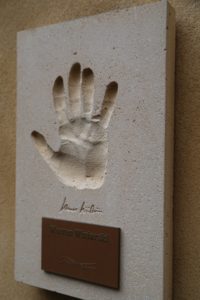
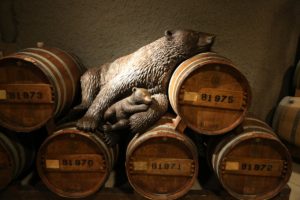
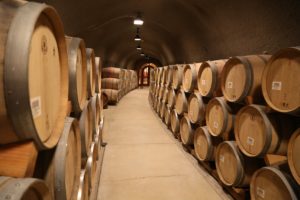
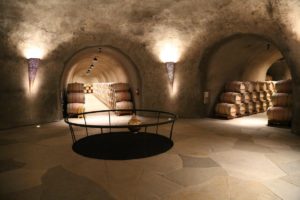
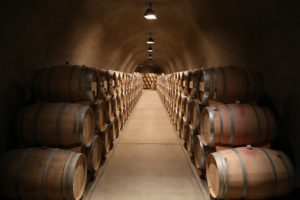
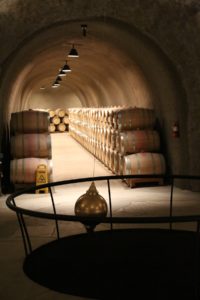
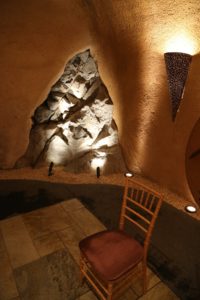
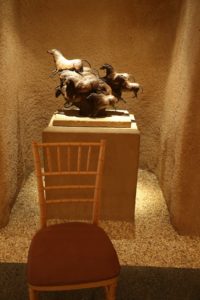
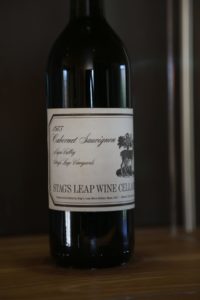
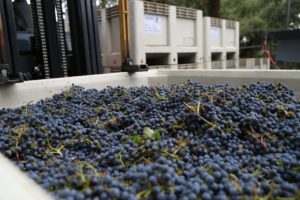
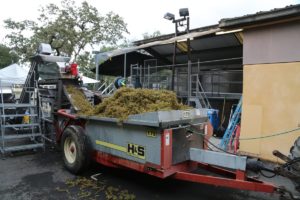
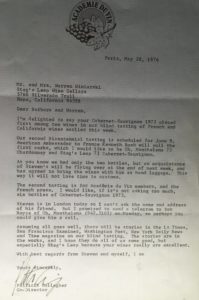
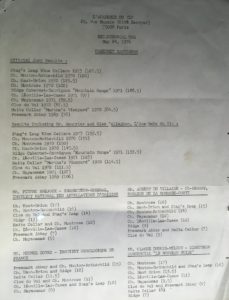
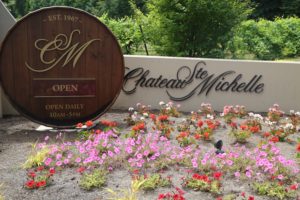
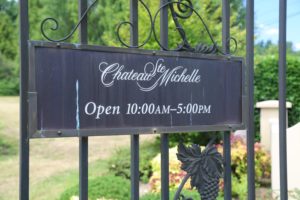
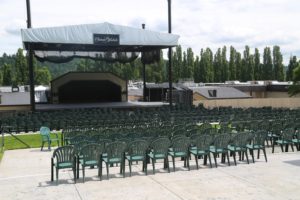
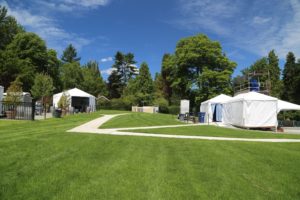
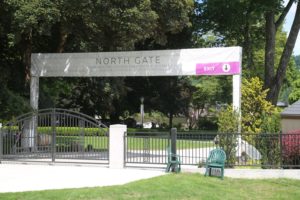
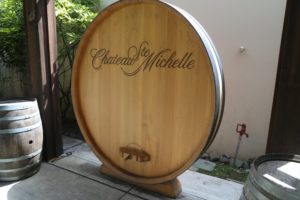
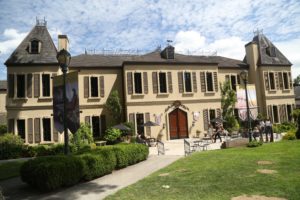

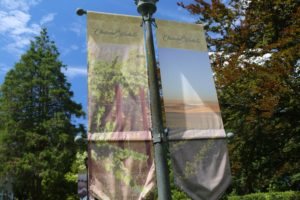
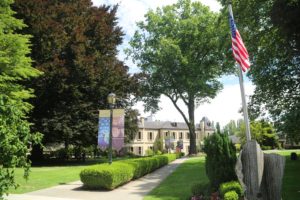
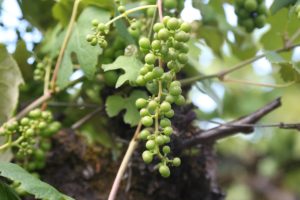
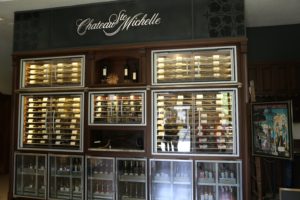
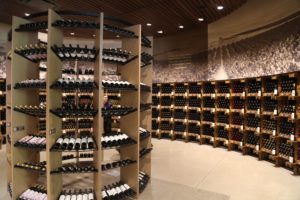
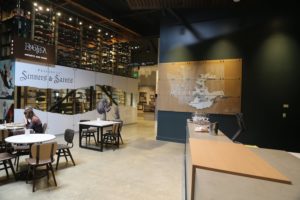
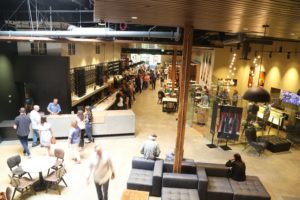

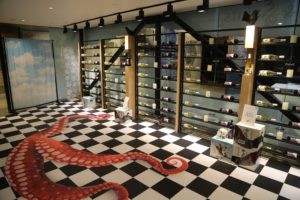
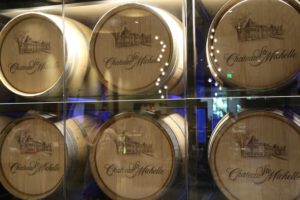
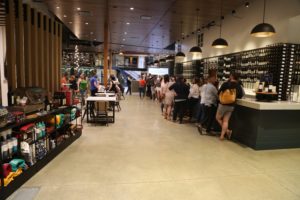
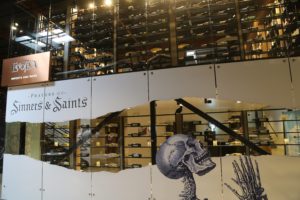
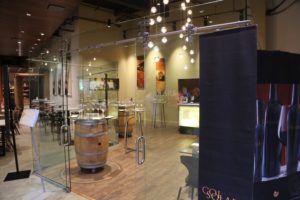
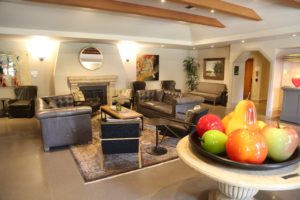
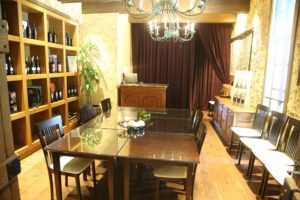
Really amazing research about Warren Winiarski and Stag’s Leap Wine Cellars. Thank you for sharing such a wonderful collection of the intelligence.
Jun – thanks for stopping by; I really appreciate your comments. I’ve put a bunch of time into this review – and I think its just the tip of the iceberg. I plan on visiting St. Johns University this year in Utah – i need to return to the CA Museum in Sacramento when its actually open and I was going to reach to to Warren directly last year to meet up but it didn’t seem like a good time. I need to do that very soon – hopefully later this year. Lots more to come on this review!